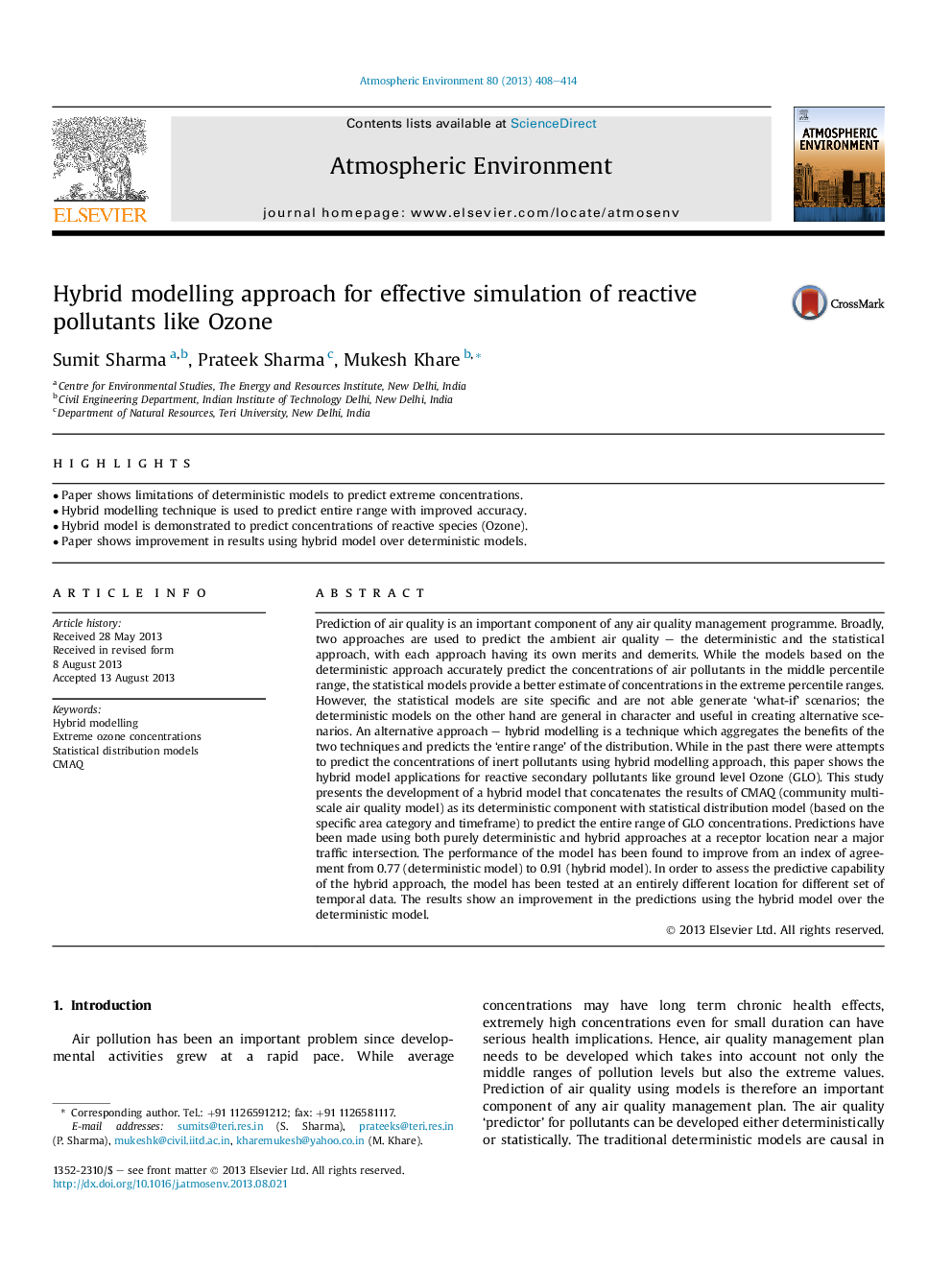| کد مقاله | کد نشریه | سال انتشار | مقاله انگلیسی | نسخه تمام متن |
|---|---|---|---|---|
| 6340682 | 1620391 | 2013 | 7 صفحه PDF | دانلود رایگان |
- Paper shows limitations of deterministic models to predict extreme concentrations.
- Hybrid modelling technique is used to predict entire range with improved accuracy.
- Hybrid model is demonstrated to predict concentrations of reactive species (Ozone).
- Paper shows improvement in results using hybrid model over deterministic models.
Prediction of air quality is an important component of any air quality management programme. Broadly, two approaches are used to predict the ambient air quality - the deterministic and the statistical approach, with each approach having its own merits and demerits. While the models based on the deterministic approach accurately predict the concentrations of air pollutants in the middle percentile range, the statistical models provide a better estimate of concentrations in the extreme percentile ranges. However, the statistical models are site specific and are not able generate 'what-if' scenarios; the deterministic models on the other hand are general in character and useful in creating alternative scenarios. An alternative approach - hybrid modelling is a technique which aggregates the benefits of the two techniques and predicts the 'entire range' of the distribution. While in the past there were attempts to predict the concentrations of inert pollutants using hybrid modelling approach, this paper shows the hybrid model applications for reactive secondary pollutants like ground level Ozone (GLO). This study presents the development of a hybrid model that concatenates the results of CMAQ (community multi-scale air quality model) as its deterministic component with statistical distribution model (based on the specific area category and timeframe) to predict the entire range of GLO concentrations. Predictions have been made using both purely deterministic and hybrid approaches at a receptor location near a major traffic intersection. The performance of the model has been found to improve from an index of agreement from 0.77 (deterministic model) to 0.91 (hybrid model). In order to assess the predictive capability of the hybrid approach, the model has been tested at an entirely different location for different set of temporal data. The results show an improvement in the predictions using the hybrid model over the deterministic model.
Journal: Atmospheric Environment - Volume 80, December 2013, Pages 408-414
